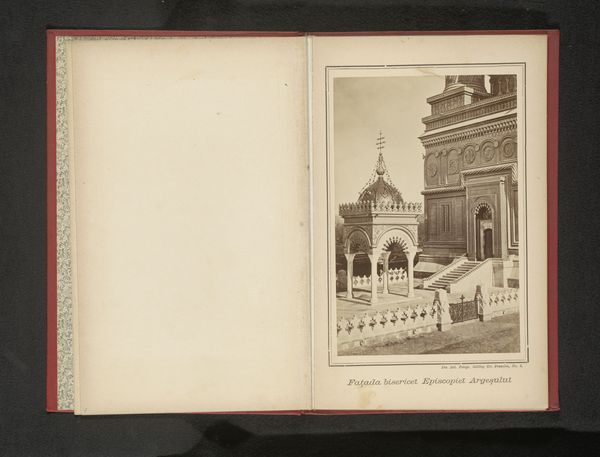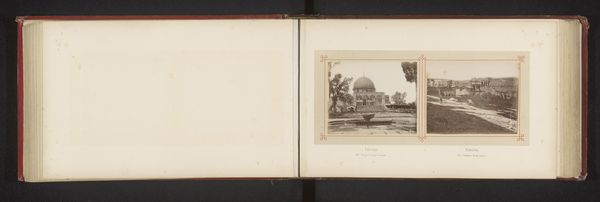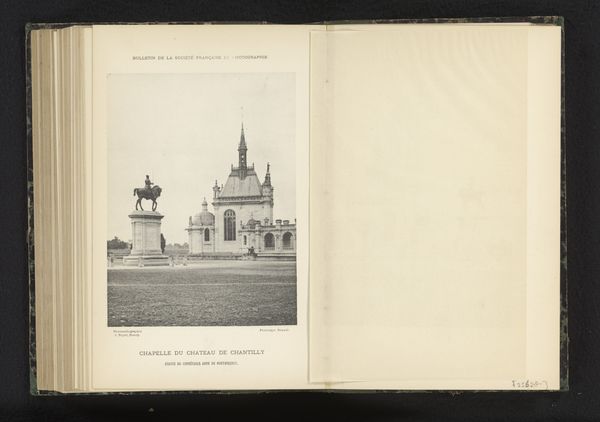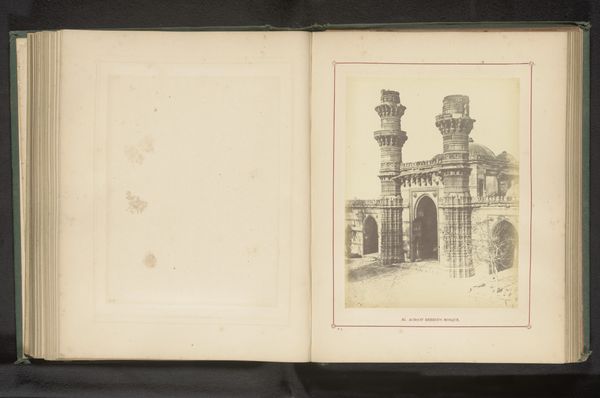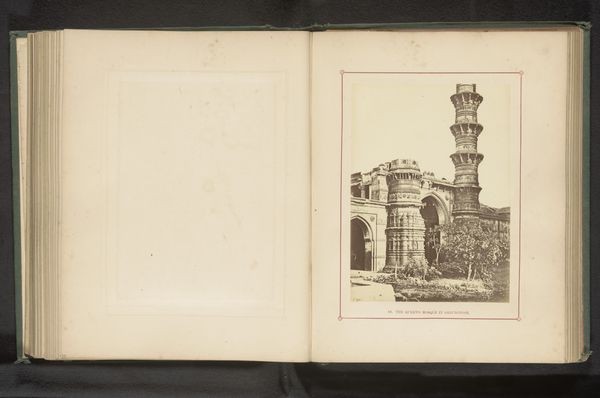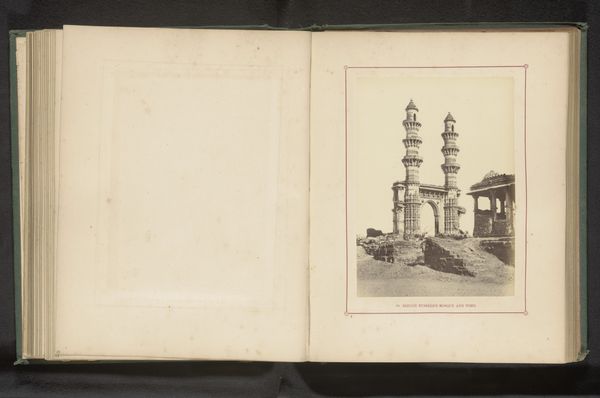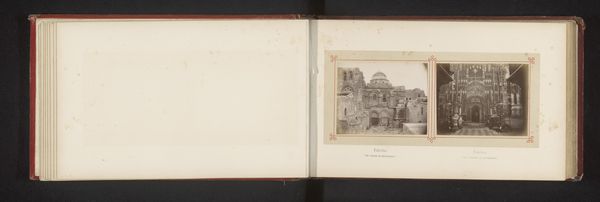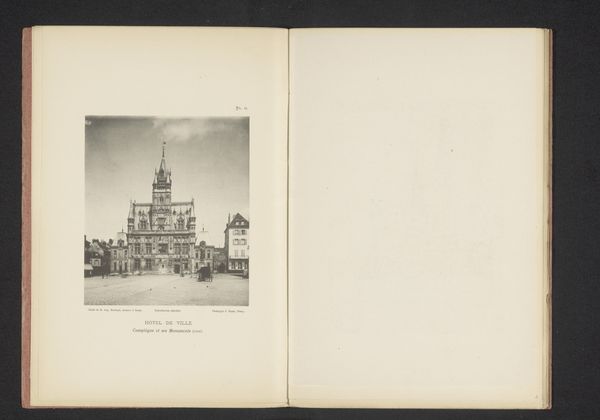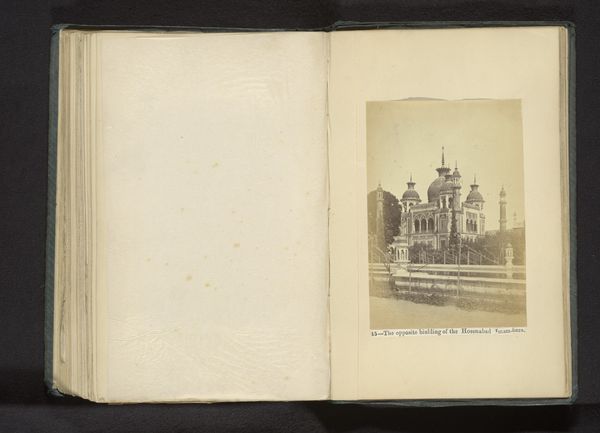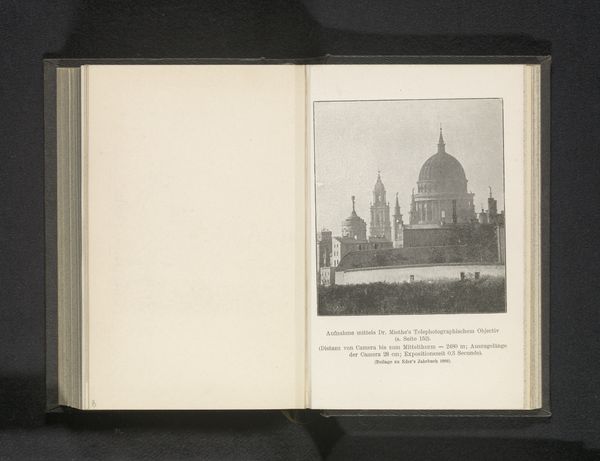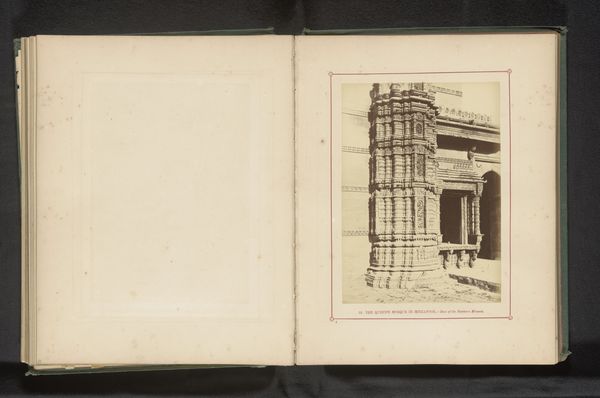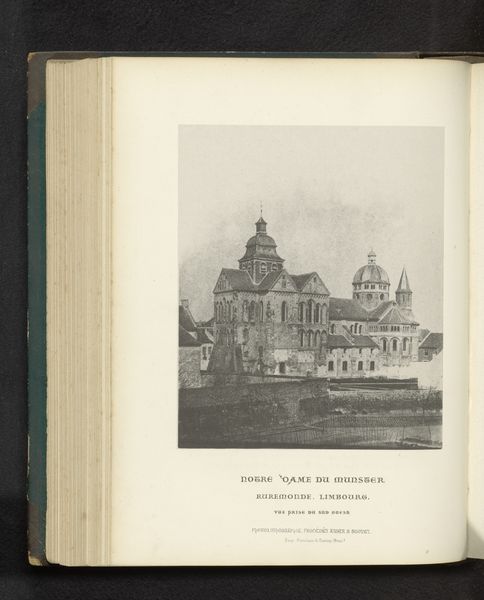
print, photography, gelatin-silver-print, architecture
# print
#
landscape
#
photography
#
orientalism
#
gelatin-silver-print
#
architecture
Dimensions: height 171 mm, width 113 mm
Copyright: Rijks Museum: Open Domain
Curator: This gelatin silver print, taken in 1886 by Szöllősy, depicts the exterior of the Curtea de Argeș Cathedral. Editor: My first thought? Serenity. Despite the formal architectural subject, there’s something so still and peaceful about the image. It feels hushed, almost like a sacred silence before the bells ring. Curator: That sense of stillness is interesting, given the historical context. The late 19th century in Romania was a period of intense nation-building, with cultural production, including photography, deeply implicated in forging a national identity. Representations of significant architectural monuments like this cathedral played a role in visually solidifying that identity, connecting present aspirations with historical narratives. Editor: So, it’s more than just a pretty building portrait? I mean, look at the tones – it’s a limited palette, really, all those greys, lending a timeless quality to the cathedral, like it's always been there, anchoring the landscape and Romanian history. Did Szöllősy consciously evoke those historical associations? Curator: The rise of orientalism, of which this print can be considered a reflection, sought to position a nation’s cultural artifacts within the global context, as well. This building isn't just structurally amazing, with those swirling external details. As it was seen at the time, and potentially meant by the photographer, its imposing presence on the landscape evokes power, permanence, and a legacy to be honored. Editor: Power, definitely, and also a certain… vulnerability, perhaps? The print's sepia tone suggests distance in time, while the landscape looks pretty barren and exposed. Curator: That reading can’t be divorced from a contemporary perspective, given that the patriarchal underpinnings of those early nationalist movements have been brought into critical discussions by current scholars working in gender studies, queer theory and postcolonial theory. To critically contextualize an image, in my mind, means considering a confluence of standpoints and not just hegemonic interpretations that have defined art-historical discourse. Editor: So, looking at it through those different lenses gives it a new resonance. Curator: Precisely. Editor: For me, it remains the cathedral as an island of history— isolated, beautiful, slightly mournful, waiting to be filled with something. Maybe that "something" is all these stories we're weaving around it now. Curator: Absolutely. That's why engaging with art through different theoretical approaches allows it to stay relevant and open to reinterpretation across time.
Comments
No comments
Be the first to comment and join the conversation on the ultimate creative platform.

